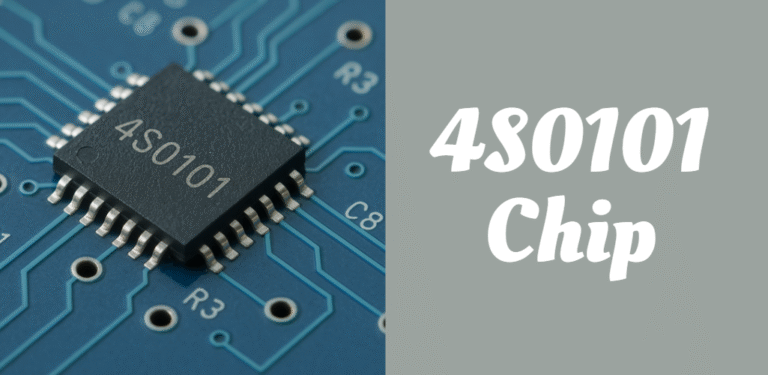Understanding Source Address 5910d068: A Deep Dive into Technical Origins and Practical Applications
When navigating the world of system programming, network analysis, or crash debugging, you might come across technical strings like source address 5910d068. At first glance, it may look like a random mix of characters, but in reality, it serves as a vital clue in identifying where a specific operation originated from in system memory or network traffic.
This kind of address is typically found in hexadecimal format and is used in low-level technical processes to help trace issues, monitor performance, or track unauthorized activities. In this guide, we will explore what source address 5910d068 really means, how it appears in real-world scenarios, and how you can interpret and analyze it effectively using simple language and examples.
Technical Origins & Context
The hexadecimal notation “5910d068” is a common format used in computing to represent memory addresses or source locations in a network transaction. In systems programming, addresses like this are used to pinpoint specific memory locations or program execution points.
The term “source address” refers to the origin of a request, data packet, or code instruction, depending on the context.
This address may appear in system crash logs, debugging reports, or even during network protocol analysis. It’s part of a broader family of identifiers that help software engineers, cybersecurity analysts, and system administrators make sense of what a machine was doing at a specific moment.
Whether you’re working in C, C++, or working with a system log in Linux or Windows, such source addresses can tell you exactly where in memory or which module an action came from.
Role in Debugging & Memory Management
In the world of software development and especially in debugging, source address 5910d068 plays a crucial role. When an application crashes or behaves unexpectedly, modern debuggers like GDB (GNU Debugger) or WinDbg often generate detailed memory dumps or trace logs.
These logs include hexadecimal addresses like 0x5910d068 to indicate exactly where the crash occurred or what memory pointer failed.
This specific source address could represent a function call, an array overflow point, or even a memory leak. Developers can load the symbol files (which translate these addresses into human-readable function names) and use them to identify the problematic line in the code. This process makes troubleshooting much easier and more targeted.
In memory management, such addresses also help identify if a pointer has been deallocated improperly or if there’s an attempt to access a restricted part of memory. When paired with tools like Valgrind or AddressSanitizer, these memory addresses become essential for improving the stability and security of applications.
Use in Network & Packet Analysis
Outside of memory and program execution, source address 5910d068 may also show up in networking logs or packet captures. Tools like Wireshark or tcpdump can display hexadecimal addresses for devices on a network or internal source locations in data packets.
In this scenario, the source address doesn’t refer to memory but rather to the sender of a network packet. While most human-readable IP addresses appear as dotted decimal (e.g., 192.168.1.1), in packet headers they are often stored and displayed in hexadecimal format for efficiency. A string like 5910d068 may correspond to a specific IP address when converted properly.
Understanding the origin of such a network packet helps in tracing where a connection came from, which is especially important in cybersecurity. Whether it’s tracking a potential DDoS source or identifying packet spoofing, recognizing and interpreting addresses like this is key.
Deep Dive: Memory Pointer Interpretation
Let’s take a deeper look into how a value like source address 5910d068 is interpreted in memory terms. In a 32-bit system, memory is addressed using 4 bytes. Each byte can hold a value between 00 and FF in hexadecimal.
Here’s how you might break down the address:
| Hexadecimal | Decimal Equivalent | Description |
|---|---|---|
| 59 | 89 | Segment or page |
| 10 | 16 | Offset |
| D0 | 208 | Data location indicator |
| 68 | 104 | Final byte position |
When this address is passed through a memory debugger with symbolic information loaded, it can often be mapped directly to a specific line in the source code. If the code is compiled with debug symbols, tools like objdump or addr2line can show which file and function this address points to.
Practical Scenarios & Case Studies
To better understand the usage of source address 5910d068, consider the following real-world scenarios:
- In a software crash, a developer sees that the memory access violation occurred at address 0x5910d068. Using GDB, they determine that this corresponds to a buffer overflow in a sorting algorithm. Fixing this prevents future crashes.
- In a network forensic analysis, a suspicious packet contains source address 5910d068. The hexadecimal address is decoded to an IP tied to a foreign server involved in malicious activity. This helps the cybersecurity team block and report the incident.
- A malware analyst finds the same address in multiple system logs across infected machines. They realize the malware is using this as a shellcode jump point, aiding in reverse engineering the exploit.
Tools & Methods to Analyze It
When dealing with a hexadecimal source address like 5910d068, the following tools can assist:
| Tool | Purpose | Platform |
|---|---|---|
| GDB | Debugging executable code | Linux/Unix |
| WinDbg | Analyzing Windows crash dumps | Windows |
| Wireshark | Capturing and analyzing network traffic | Cross-platform |
| Valgrind | Detecting memory leaks and invalid memory use | Linux |
| Hex Editors | Viewing and editing binary data | All platforms |
| objdump | Translating memory addresses into symbols | Linux/Unix |
| addr2line | Mapping memory addresses to source code lines | Linux/Unix |
These tools help in identifying where the address comes from, what it signifies, and how to resolve issues linked to it.
Common Pitfalls & Misinterpretations
One of the most common mistakes when dealing with addresses like source address 5910d068 is assuming it’s the problem rather than a symptom. For example, a crash at this address may not mean it’s the faulty location—it might simply be the last known location before a corruption occurred elsewhere.
Another error is misinterpreting the hexadecimal format. Some users confuse this with ASCII characters or assume it refers to an actual readable string. It’s important to always convert and trace such addresses using the correct tools and debug information.
Best Practices for Address Analysis
When analyzing technical values like source address 5910d068, always follow a structured approach. Start by identifying the source (is it a memory pointer, network address, or log trace?).
Use debugging tools with symbols enabled to trace it back to human-readable names. Ensure your environment matches the one that generated the address (same OS, same build version). Always document your findings for repeatability and future reference.
Borderline Reference to “Basdalm Separation”
There have been occasional misleading references that connect source address 5910d068 to unrelated topics such as “Basdalm Separation.” These are likely generated for search engine manipulation or misinformation and should be disregarded. The address itself has no formal or semantic connection to such topics and is purely a technical pointer.
Wrap‑Up: Why It Matters
Understanding what source address 5910d068 means and how it works in various technical scenarios is not just about decoding a number. It’s about gaining insight into system operations, identifying problems, and improving reliability and security.
Whether you’re a developer fixing a crashing app, a network engineer tracking traffic, or a cybersecurity analyst studying intrusion attempts, being able to analyze source addresses like this is a valuable skill.
Additional Posts
Melekaike Laka: Meaning, History, Cultural Roots & Hawaiian Holiday Charm
Munchabilies THC Trippy Edibles: A Complete Guide to Effects, Safety, and Usage
Understanding the Truth Behind 224-717-9517: Scam Alerts, Caller Details, and Protection Tips
Understanding Qiowofvuhoz: The Mysterious Term with Multilayered Meaning in Tech, Life & Data






